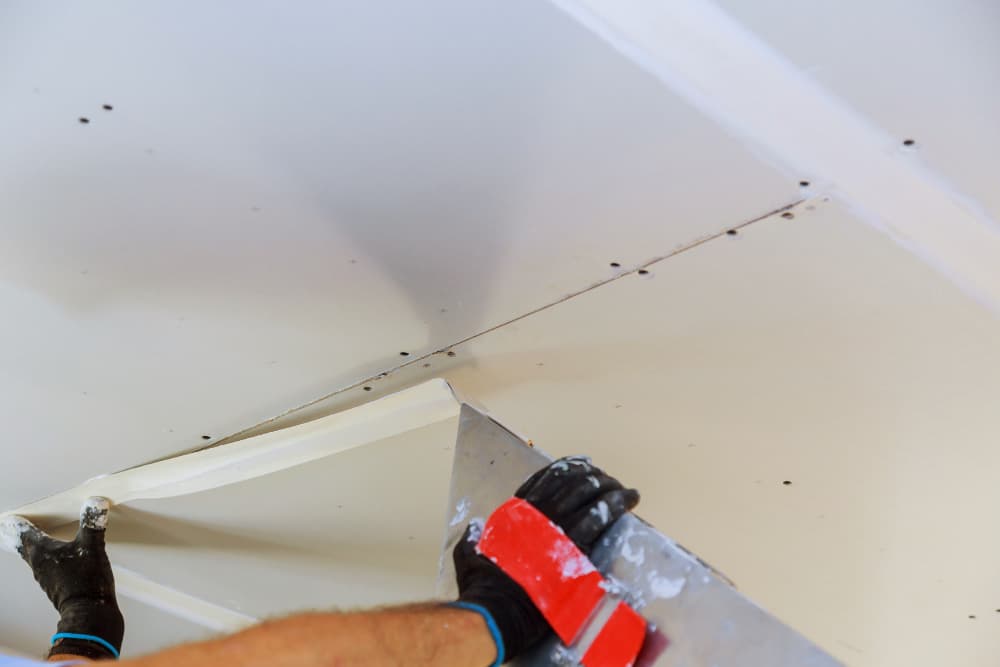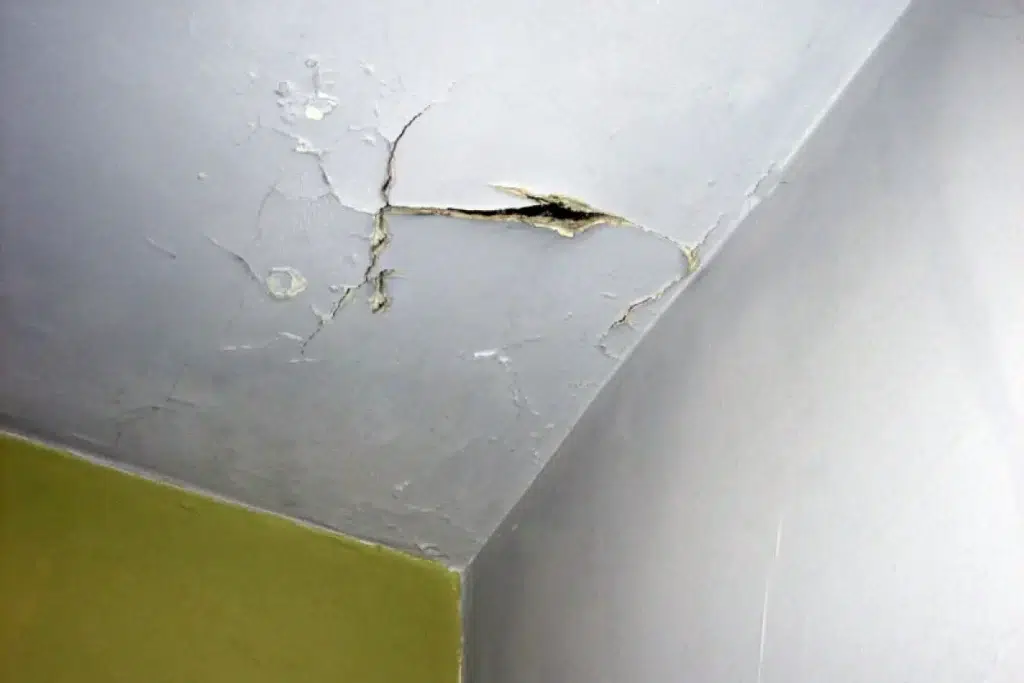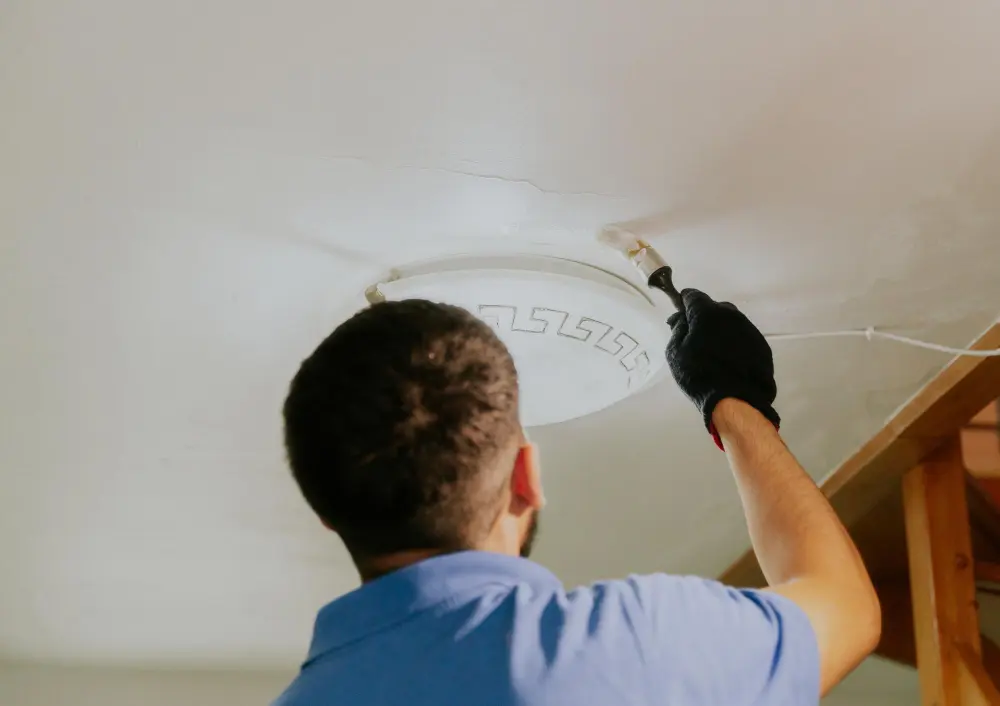
Ceiling cracks are a common issue that many homeowners face, but they can be more than just an eyesore – they might signify underlying problems that need attention. In this comprehensive guide, we’ll show you how do you fix cracks in ceiling effectively and stop them from reappearing, including tips on identifying the root cause and techniques for lasting fixes.
Whether you’re facing minor cosmetic cracks or major structural concerns, we’ve got your back. Before we jump into fixing them up, let’s understand why these ceiling cracks happen.
And remember, for reliable ceiling repair in Albany, Bunbury, Busselton, Denmark, Esperance, Mandurah, Mount Barker, Rockingham, and the South West of Western Australia, count on Southern Ceiling Repairs. Factors such as the settling of the house, temperature fluctuations, moisture, and structural movements can all contribute to the development of cracks.
Risk of Cracks in the Ceiling

When cracks appear in the ceiling, they not only affect the aesthetics of your home but can also pose significant risks:
Moisture can seep through the cracks, leading to hidden water damage, mould growth, and weakened ceiling materials. Over time, this can compromise the structural integrity of the ceiling.
As the cracks widen, the risk of falling debris or even partial ceiling collapse increases, posing a danger to the safety of your household. The larger the cracks grow, the more extensive and expensive the repairs become, making early action essential.
Types of Ceilings
There are several types of ceilings, each defined by the material used. Each material comes with its own set of characteristics, including differences in durability, maintenance requirements, and susceptibility to cracking. Below, we explain the main types of ceilings and their features.
Plaster Ceilings
Plaster ceilings are traditional and provide a smooth, elegant finish. They’re highly customisable and are often used in decorative designs.
However, plaster can develop cracks over time due to the natural settling of the building, moisture exposure, or vibrations. Regular maintenance, such as filling and repainting, can help prolong their lifespan.
Drywall Ceilings
Drywall ceilings, made from gypsum board, are lightweight, affordable, and easy to install. They’re a popular choice in modern homes.
Drywall can be prone to cracking, especially due to temperature fluctuations, moisture, or structural movements. Addressing these issues promptly can prevent further damage.
Textured Ceilings
Textured ceilings, such as popcorn or stippled finishes, are designed to conceal imperfections and add a unique aesthetic.
While they’re less prone to visible minor cracks, repairing damage can be challenging as it requires matching the existing texture. Moisture and ageing are common causes of deterioration.
Timber Ceilings
Timber ceilings add natural warmth and charm to interiors, often used in rustic or contemporary designs.
Wood can expand or contract with changes in humidity, leading to gaps or cracks. Regular sealing and humidity control are crucial for maintaining their integrity.
Concrete Ceilings
Concrete ceilings are highly durable and commonly used in industrial or modern architectural designs. They’re resistant to wear but are heavy and may develop cracks due to structural shifts or water ingress.
Inspecting and addressing any cracks early is important to avoid compromising the structure.
Metal Ceilings
Metal ceilings, often made of aluminium or steel, are durable, weather-resistant, and commonly used in commercial buildings. They offer a sleek, modern look and are less prone to cracking.
However, they can dent or corrode if not properly maintained, particularly in coastal areas.
By understanding the different types of ceilings and their characteristics, you can choose the right material for your needs and ensure proper maintenance to prevent issues such as cracking.
Causes of Cracks in the Ceiling

The causes of cracks in ceilings vary depending on the material used. Below, we explain the main causes of cracks in plaster and drywall ceilings, as well as other ceiling materials.
Plaster
Plaster ceilings in Australian homes are susceptible to moisture and temperature fluctuations, often leading to cracks as the material’s durability decreases. If exposed to long periods of rain or high humidity, plaster can absorb moisture, causing it to expand and weaken.
Additionally, without regular maintenance—such as repainting or resealing—the plaster may deteriorate more quickly, resulting in more prominent cracks.
Drywall
Drywall ceilings (also known as plasterboard) are commonly used in Australian homes and can crack due to temperature changes, humidity, or movement within the building’s structure. If there’s water ingress, whether from leaks or high humidity, drywall can expand and contract, leading to cracks.
Regular inspections, particularly for water damage and ensuring proper ventilation, are essential to prevent further issues. Structural movement or settling can also contribute to cracks in drywall ceilings, so addressing these promptly is important to prevent long-term damage.
Other Ceiling Materials
Ceilings made from timber, concrete, or metal can also develop cracks, though the causes can vary. Timber ceilings, often found in Australian homes with a more rustic or coastal design, are affected by humidity changes, causing them to expand and contract, which can result in cracking. Concrete ceilings, commonly seen in modern or industrial-style homes, may crack due to settling or water ingress.
Metal ceilings, typically used in commercial or industrial buildings, are less prone to cracking but can suffer from damage due to extreme temperatures or structural movement. Regular inspections, maintenance, and timely repairs—such as sealing and painting—are key to preserving these ceiling materials.
Addressing cracks early and understanding their cause is crucial in maintaining the integrity and appearance of your ceiling, helping to prevent further damage.
How to Fix Cracking Ceiling

1. Assess the Severity
Begin by examining the crack to determine its severity. Minor, superficial cracks may only require cosmetic fixes, while larger cracks could indicate more significant structural issues.
Look for signs such as sagging, loud cracking noises, or plasterboard deterioration.
2. Repairing Small, Superficial Cracks
For minor cracks that are purely cosmetic, follow these steps:
- Use a putty knife to gently widen the crack and remove any loose debris.
- Lightly sand the area around the crack to create a smooth surface.
- Apply joint tape or fibreglass mesh tape over the crack to reinforce it.
- Fill the crack with a plaster or joint compound, ensuring it’s level with the ceiling surface.
- Once dry, sand the area again for a seamless finish.
- Apply a primer and paint to blend the repaired area with the rest of the ceiling.
3. Addressing Larger or More Serious Cracks
For larger cracks or those indicating structural issues, a more extensive repair approach is necessary:
- Identify and resolve the underlying cause of the crack, such as water damage or structural movements.
- Use a wider strip of joint tape or fibreglass mesh tape for added reinforcement.
- Apply multiple layers of plaster compound, allowing each layer to dry completely before sanding.
- Seal the repaired area with a suitable sealant to prevent future cracking.
- Finish by painting the repaired section to match the surrounding ceiling.
4. Preventing Future Cracking
To stop ceiling cracking from occurring again in the future, consider the following preventive measures:
- Ensure proper ventilation and humidity control in your home to prevent moisture buildup, which can weaken ceiling materials.
- Monitor and address any signs of structural issues promptly, such as sagging or settling of the house.
- Regularly inspect your ceiling for cracks or signs of damage, and address them promptly to prevent further deterioration.
- Consider reinforcing vulnerable areas of your ceiling, such as joints and corners, with additional support.
How to Stop Ceiling Cracking
Understanding how to stop ceiling cracking is crucial for maintaining a sturdy ceiling. By following these steps and addressing the factors causing the cracks, you can repair existing damage and prevent future issues from arising.
By staying on top of maintenance and taking preventative steps, you can ensure your ceilings stay in great shape for years. Say goodbye to worries about sagging ceiling water damage with Southern Ceiling Repairs on your side.
